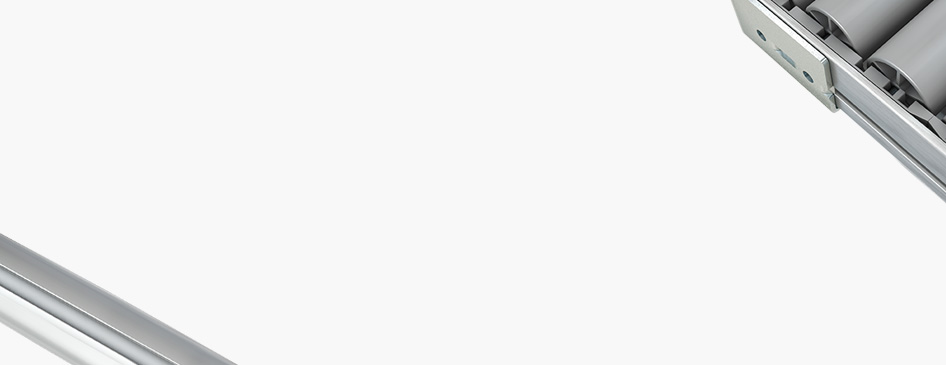
Seleccione uno
o más idiomas
0,1,3
- Alemán
- Inglés
- Chino
- Español
Aleación hierro-carbono
Las aleaciones hierro-carbono con como principal constituyente y el carbono como socio de aleación son adecuadas para un amplio rango de aplicaciones y tienen todo tipo de propiedades diferentes.
El hierro procesado también contiene cierta porción de carbono (por ejemplo, debido al quemado de coque en el alto horno), el cual determina las . En términos generales, entre mayor sea el contenido de carbono, mejor será la resistencia y más pobre la conformabilidad.
El hierro es uno de los pocos metales polimórficos que se produce en diferentes tipos de cristalización. Los constituyentes técnicamente importantes producidos como productos de enfriamiento incluyen:
Hierro (austenita) $\gamma $ con retícula cúbica centrada en las caras. Este tiene un empaque de retícula de cristal denso, buena conformabilidad y una expansión térmica superior. Hasta un buen dos por ciento de carbono es fácilmente soluble en él. El gris, en el que el carbono aparece como grafito, es frágil y muestra una buena estabilidad dimensional. En el hierro vaciado blanco, por otro lado, el carbono aparece en forma de cementita.
El hierro (ferrita) $\alpha $ cuenta con doce átomos adyacentes en la retícula cúbica centrada en el cuerpo con baja solubilidad de carbono. Cuando se usa en el , se asegura una buena conformabiliadd y una baja expansión térmica. A diferencia del hierro vaciado, el acero es .
Las aleaciones hierro-carbón incluyen aceros y forjados, y también aleaciones vaciadas. Las se usan para piezas estructurales y también para hacer herramientas. El rango de aplicaciones se extiende gracias las buenas posibilidades de de las aleaciones (, ).
Eisen-Kohlenstoff-Legierung
Eisen-Kohlenstoff-Legierungen mit Eisen als Hauptkomponente und Kohlenstoff als Legierungspartner gibt es für vielfältige Zwecke und mit unterschiedlichsten Eigenschaften.
Verarbeitetes Eisen enthält (etwa im Hochofen durch Verbrennung von Koks) immer auch einen Anteil an Kohlenstoff, der seine Werkstoffeigenschaften bestimmt. Generell gilt: Je höher der Gehalt an Kohlenstoff, desto höher ist die Festigkeit und desto geringer die Verformbarkeit.
Eisen ist eines der wenigen polymorphen Metalle, das in verschiedenen Kristallisationsarten auftritt. Bei der Abkühlung aus einer Schmelze entstehen unter anderem technisch wichtiges
-Eisen (Austenit) mit kubisch-flächenzentriertem Gitter. Es hat eine dichte Kristallgitterpackung, eine hohe Verformbarkeit und eine höhere Wärmeausdehnung. Kohlenstoff ist darin mit bis über zwei Prozent gut lösbar. Spröde und formsteif ist graues Gusseisen (Grauguss), in dem Kohlenstoff als Graphit auftritt. Dagegen kommt in weißem Gusseisen Kohlenstoff als Carbid in Form von Zementit vor.
-Eisen (Ferrit) mit zwölf Nachbaratomen im kubisch-raumzentrierten Gitter mit geringer Kohlenstofflöslichkeit, das beim Stahl für gute Verformbarkeit und geringe Wärmeausdehnung sorgt. Im Gegensatz zum Gusseisen ist Stahl schmiedbar.
Zu den Eisen-Kohlenstofflegierungen gehören beispielsweise Walz- und Schmiedestähle oder Gusslegierungen. Die Legierungen werden sowohl für Konstruktionsteile als auch für den Werkzeugbau verwendet. Der Anwendungsbereich der Legierungen wird durch die guten Möglichkeiten zur Eigenschaftsveränderung (Härten, Glühen) erweitert.
Iron-carbon alloy
Iron-Carbon alloys with Iron as the main constituent and carbon as the alloying partner are suitable for a wide range of applications and have all kinds of different properties.
Processed iron also always contains a certain proportion of carbon (e.g. due to the burning of coke in the blast furnace), which determines its Material properties. Generally speaking, the higher the carbon content, the better the Strength and the poorer the formability.
Iron is one of the few polymorphic Metals that occurs in different crystallisation types. Technically important constituents produced as a melt cools include
iron (austenite) with a face-centred cubic lattice. This has dense crystal lattice packing, good formability and superior Thermal expansion. Up to a good two percent of carbon is easily soluble in it. Grey cast iron, in which carbon occurs as graphite, is brittle and exhibits good dimensional stability. In white cast iron, on the other hand, carbon occurs in the form of cementite.
iron (ferrite) has twelve adjacent atoms in the body-centred cubic lattice with low carbon solubility. When used in Steel, it ensures good formability and low thermal expansion. Unlike cast iron, steel is suitable for Forging.
Iron-carbon alloys include rolled and forged steels and also Casting alloys. The alloys are used for structural parts and also for tool making. The range of applications is extended by the good opportunities to alter the properties of the alloys (Hardening, Annealing).
铁碳合金
铁碳合金中的铁作为主要成分而碳作为合金掺入物,有广泛的应用范围,并具有各种不同性能的种类。
加工过的铁也总是含有一定比例的碳(例如由于鼓风炉中的焦炭燃烧),这决定了铁碳合金的材料性能。一般而言,其中碳含量越高,强度越大,但是成型性越差。
铁是少数的多形态金属之一,不同形态具有不同的结晶体类型。熔融冷却工艺中产生的重要组份包括
$\gamma $ 铁(奥氏体),具有面心立方晶格。这确保了密集的晶体点阵填塞,具有良好的成型性和优异的热膨胀性。最多可溶解 2%的碳。灰口铸铁,其中碳以石墨形态存在,脆性大但具有良好的尺寸稳定性。而另一方面,白口铸铁中碳以渗碳体的形式存在。
$\alpha $ 低碳溶解度的铁(铁素体)的体心立方晶格中具有 12 个相邻原子。当形成钢铁时,它可以确保良好的成型性和低的热膨胀性。与铸铁不同,钢铁适合锻造。
铁碳合金包括轧制 和锻造钢铁,还包括铸造合金。合金用于制造结构件,也用来制造工具。通过改变合金的性能(硬化,退火),扩大其应用范围。
